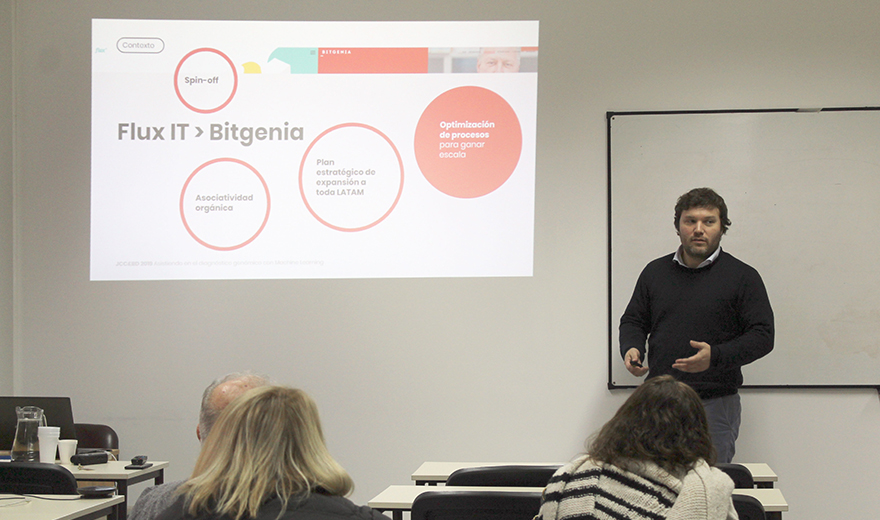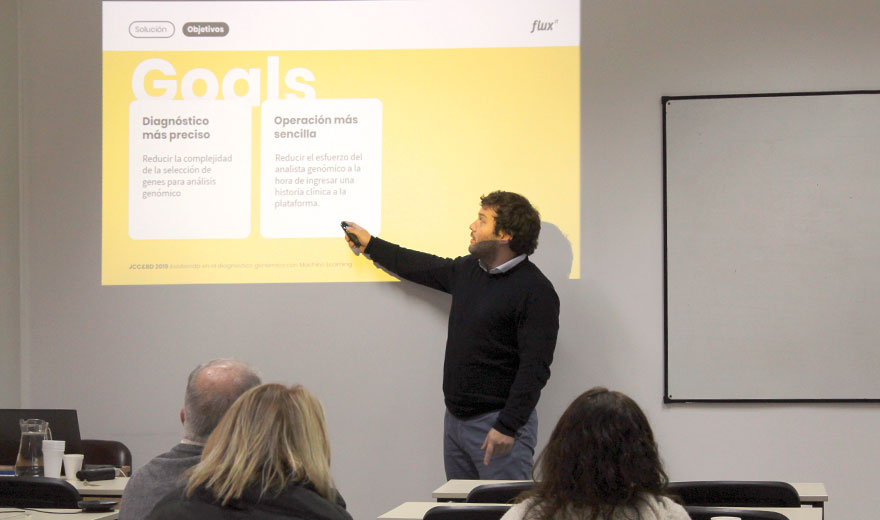Joaquín Díaz Vélez presented on the experience of applying Machine Learning to the study of genomic data.
Within the framework of the latest conference, organized by the LIDI Institute for Computer Research and the Postgraduate Secretariat of the Faculty of Informatics of the National University of La Plata (Conference location), Joaquín Díaz Vélez, business developer at Flux IT, was invited to share the experience of applying Machine Learning in the field of Bioinformatics: specifically, for the study of genomic data (precision medicine) in a joint project with Bitgenia.
The presentation, which was included in the panel of expositions of companies and titled “Assisting in the genomic diagnosis with Machine Learning,” focused on how a Flux IT team worked on optimizing one of the business’ vital processes, such as the diagnostic process.
“The problem we faced was finding a needle in a haystack: there are thousands of genes, and the symptoms associated with them are also many, and they are not generally well-defined. Today a person takes care of this manually, doing a great job of filtering and selecting, which takes about five days.”
Joaquín explained, in reference to the complex process that is carried out, based on a patient’s medical history, to determine which genes are relevant for a subsequent evaluation.


The proposed solution, said the Flux IT expert, should be able to meet two main objectives: on the one hand, reaching a more precise diagnosis (simplifying the selection of genes); and, on the other hand, making the operation of symptom loading easier.
Currently, the information for performing an analysis of genomic data is obtained from different sources: public repositories (where the structure of the symptoms and how they are related to each other are determined); Bitgenia knowledge bases (containing about 400 cases that the company has been working with); and public studies or trials (in XML format). All of this is added the Bitgenia’s B-Platform, an application where genomic analyses are managed.
“What we did was add a recommendation system, for taking the information that comes from those three repositories and making it available on the B-Platform so that you can make inquiries. The management platform takes us through REST services, and we process information from all the bases. With that we generate a model that we implement in a database.”

To end the presentation, he commented that, by being a solution used by doctors or analysts, it was decided to apply Natural Language Processing (to improve the accuracy of the diagnosis). He told that work is being done to achieve a superior user experience so that the entire Genomic diagnostic process is simpler and more intuitive.
Today the recommendation engine is in the testing and integration stage with B-Platform:
“We are testing with known and detectable diseases to see if the ranking gives appropriate results. That is, if it gives us the relevant gene within the first three or ten genes. Later will come the challenge of adapting the data entry process, advancing result analysis, and improving the quality of the data.”
The panel closed with a session for questions from the attendees about the case.